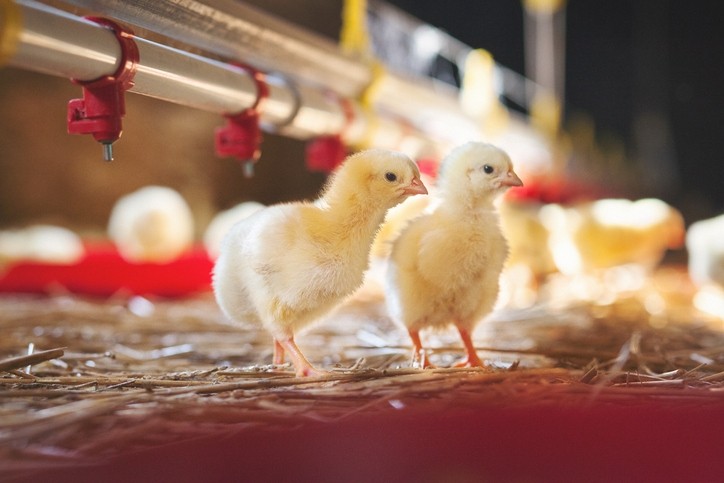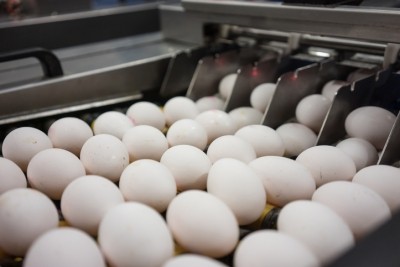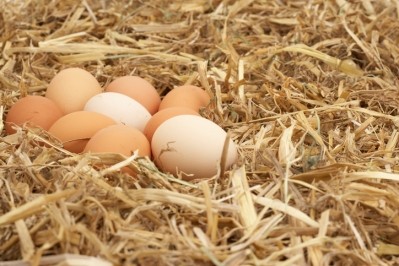Poultry sector poised for growth amidst lower feed costs, but bird flu threat looms

Rabobank published its expectations for the global poultry market this week.
Most growth will be in Southeast Asia, the Middle East, and Latin America, but at below-average levels, while China and the EU have been struggling with oversupply, notes Nan-Dirk Mulder, senior analyst, animal protein, with that organization.
Geopolitical and economic trends
Looking to feed price movements, Rabobank sees them tracking slightly lower.
Mulder expects soybean meal to be the most bearish in terms of pricing due to the expected recovery in Argentina soybean production.
In general, wheat supply is tight, globally, and a concern going forward is El Niño, with mixed opinions as to how that climate pattern will play out, he remarks.
In addition, global geopolitical issues like the Ukraine war, turmoil in the Middle East, and weather risks could also affect input costs, as well as oil and gas prices, cautions Mulder.
Earnings will gradually improve, and this will support the recovery of value-added meat products and concepts, says the analyst.
Regardless, consumers will remain sensitive to prices due to the weak economic context, and poultry will continue to benefit from downtrading in terms of meat type and product category.
“Economic growth will still be slow. Consumers over the past 18 months have been very priced focused due to inflationary pressure. But wage adjustment for inflation should give consumers additional spending power, and chicken will be more affordable compared to other animal proteins.”
Bird flu is the wild card
The industry still faces uncertainty though, and the biggest wild card for the outlook for 2024 will be avian influenza (AI), he says. Outbreaks in the Northern Hemisphere winter season have started early, an indication that this year could become a higher-pressure year than in 2022/23.
And risk in Latin America will increase in the coming months, the analyst tells FeedNavigator.
“In the US alone, we have seen several large farms hit,” he reports.
According to the latest update from the US Department of Agriculture (USDA) Animal and Plant Health Inspection Service (APHIS), there have been avian flu outbreaks in poultry flocks in 12 US states, with seven more commercial farms struck, including one in California that houses more than 1.3 million layers.
Mulder highlights cases in Japan and South Korea and increasing culling of birds this year in South Africa, one of Africa’s major poultry producers, particularly in the laying hen sector. That country’s breeding stock has also been reduced, which will have an impact on the rest of the continent as South Africa is a key supplier of parent stock.
In Europe, there have been cases in the key production countries of the UK, the Netherlands, Germany, Denmark, France, and Hungary.
“The industry needs to keep biosecurity at its highest level,” warns the poultry market expert.
Vaccination trends
Vaccination against AI is increasing but mainly in countries that don’t rely heavily on poultry exports, explains Mulder. Vaccination has previously proved a trade barrier.
France is the outlier in Europe, being the first EU country to instigate an inoculation program, starting with ducks. That country’s efforts, if proved successful, with little impact on trade, could encourage other larger chicken exporters to follow, says Mulder.
And the World Organization for Animal Health (WOAH) in May advocated for the use of vaccination against the disease.
In countries, where regulation around compensation for the poultry industry for massive cullings is not well established, or where export is not feature, vaccination has become a part of their toolkit to tackle AI.
To date, mass AI vaccination campaigns have been implemented in China, Vietnam, Indonesia, and Mexico.
EU regulatory, bird welfare shifts
Welfare and regulatory shifts have the potential to dramatically alter the European poultry landscape, says Mulder.
The European Chicken Commitment, he highlights, is a pledge committing its signatories to introduce higher welfare standards for all the chickens in their supply by 2026, including better genetics for improved quality of life, lower density production, more natural light, perches and pecking substrates to stimulate behaviour, humane slaughter and compliance with a meaningful third-party animal welfare certification and annual reporting.
In Europe, over 350 companies have signed up for better chicken, including key brands like KFC, M&S, Unilever, Nestlé, Waitrose, Danone, Elior Group, Sodexo, and 99% of the French retail market.
And the analyst notes the increasing expectations of EU consumers and regulators in terms of traceability and due diligence companies, with the Corporate Sustainability Reporting Directive (CSRD) modernising and strengthening the rules concerning the social and environmental information that companies have to report. On top of those, are reporting requirements under the EU Deforestation Regulation (EUDR), which will be implemented in December next year.













